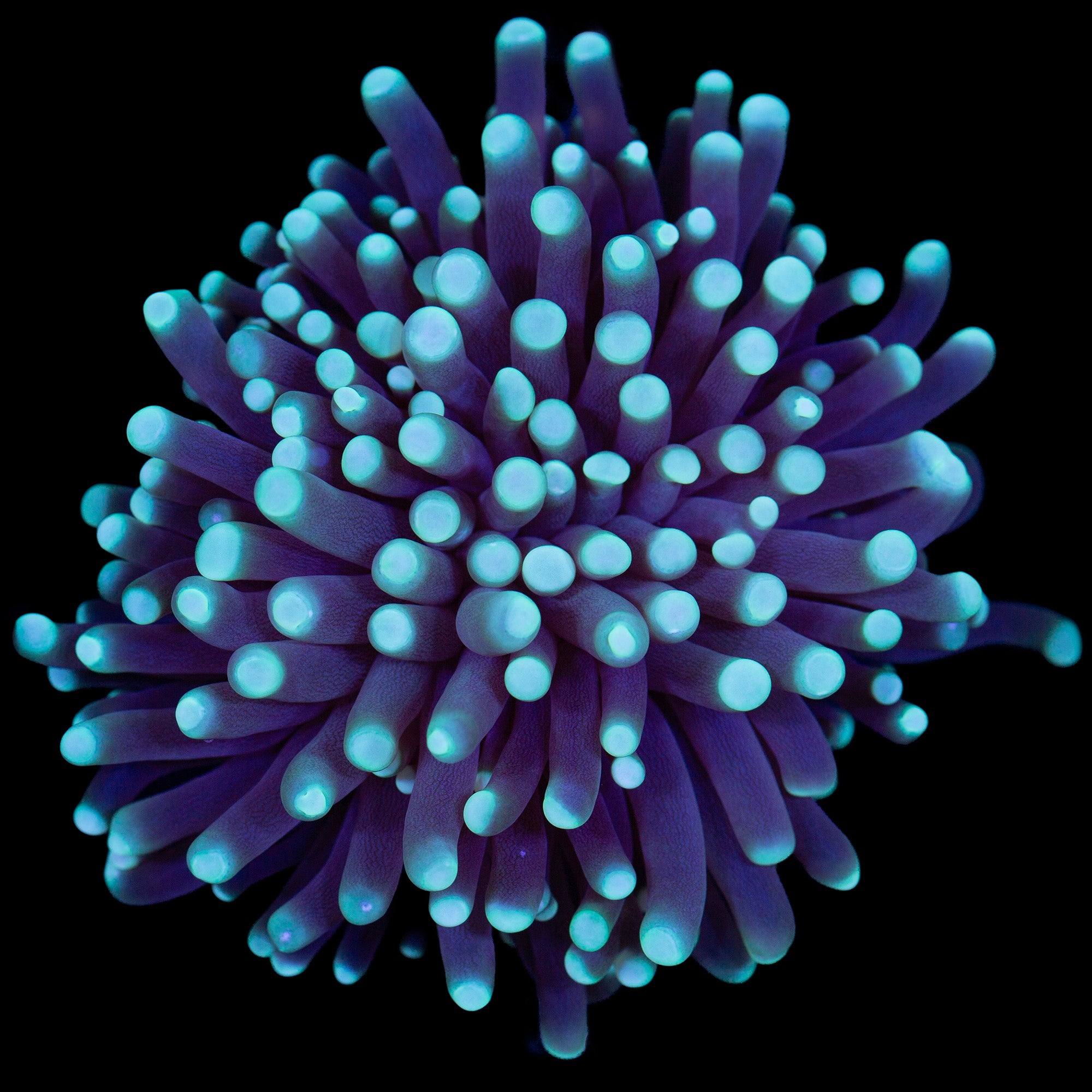Year End Clearance Sale 50% Off All Corals
Free Shipping Over $249 or $29.99 for Orders over $100
Skywalker Torch Coral
$ 89.99
Please select all options.
How to Care for Skywalker Torch Coral:
(written by Dave Burr)
Skywalker Torch Coral is a great beginner coral and will sway back and forth to the currents in the aquarium. Torch Corals are a favorite of many because of the sense of motion they bring to a reef tank.
Tentacles: Skywalker Torch Corals do have sweeper tentacles that can extend 1/2"- 1" at night and can nearby corals. Skywalker Torch Corals should be placed away from other Euphyllia species such as Frogspawn Coral and Hammer Coral as they could sting other Euphyllia Corals.
Placement: Mount the Skywalker Torch Coral using IC gel glue, or putty, on an exposed rock or ledge in the lower two- thirds of the aquarium where they will receive moderate currents and low to moderate lighting. Leave 2-3" around this coral as it has tentacles that can sting nearby corals at night.
Feeding: Although symbiotic algae called zooxanthellae hosted within them supply some of their nutritional requirements through photosynthesis they do benefit from supplemental feedings of Oyster-Feast, Roti-Feast, and mysis shrimp.
Lighting & Flow Requirements: The Skywalker Torch Coral requires low to moderate water flow and low to moderate lighting (PAR 80 - 150). T5's, Metal Halides, or LED's can all grow Torch Corals when the proper PAR levels are provided. We recommend a 14-20K color spectrum for best coloration.
Care Level: Easy
Lighting Requirements: Moderate (PAR 150-250)
Water Flow: Moderate
Aggressiveness: Aggressive
Range: Fiji, Indo Pacific, Australia, Solomon Islands
Family: Caryophyllidae
Water Conditions: 75-80° F; sg 1.024-1.026 (1.025 is ideal); pH 8.1-8.4 Ca 420-440 ppm, Alk 8-9.5 dKH, Mg 1260-1350, Nitrates <10ppm, Phosphates, < .10ppm
Water Chemistry: It is important that proper calcium (420-440 ppm), alkalinity (8-9.5 dkh - run it 7-8 if you are carbon dosing) , and magnesium levels (1260-1350 ppm) are maintained. Raising magnesium levels gradually up to 1400-1600 ppm can help to combat algae outbreaks, just keep CA and Alk in line as you raise the Mg. Nitrates should be below 10 ppm and phosphates should be below .10 ppm. We recommend doing a water change when Nitrate levels rise to 10 ppm. It is important to replace your phosphate media when phosphates rise to .10 ppm. Media Reactors make the most efficient use of your phosphate media by fluidizing it.
Dosing: Vivid Aquariums uses and recommends dosing pumps to automate the dosing of additives and keep your levels more constant. A dosing pump can alleviate the chore of manually dosing your aquarium with Ca, Alk, & Mg 2,3, or 4 times per week and will benefit your aquarium by keeping your levels constant through frequent small additions of Ca, Alk, & Mg. Our tanks all progressed when we switched from 3 manual dosings per week to 70 automatic dosings per week and we got a lot more work done.
Category: 150-300, 75-100, easy, euphyllia-glabrescens, LPS Corals, moderate-lighting
Type: Corals and Inverts


